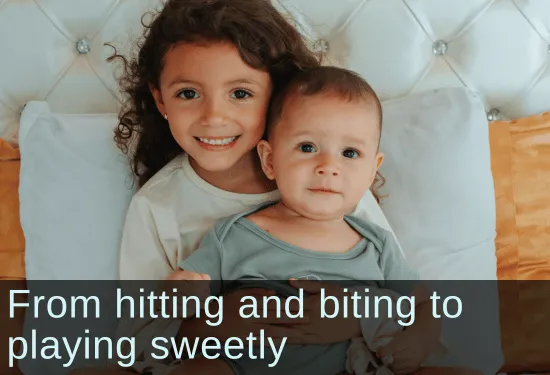Primitive Reflex Integration Case Studies
Behavior, Balance, and Anxiety Transform after Reflex Integration
Meltdowns, hitting, and biting reduce; confidence on play structures and stairs improves
This preschooler with separation anxiety had explosive meltdowns nearly every day. She wanted her mother’s constant attention, and often hit and bit her younger brother. She also demonstrated gravitational insecurities on stairs and play equipment. After receiving rhythmic movements and reflex integration, she became much calmer, more outgoing, and was no longer afraid of heights.
Submitted by Chiana Hosseini OTR/L

| Before | After |
|---|---|
| Explosive meltdowns 5-7 days a week; screaming, crying, falling on the floor, hitting, pushing, pulling hair, and biting | Significant decrease in meltdowns, only experiencing them once every 2 weeks or so |
| Jealousy of baby brother; hitting, pushing and biting him | Now mostly sweet with her brother and will play with him without issues for up to 20 minutes at a time |
| Meltdowns when particular preferences (cutting food a certain way) were not met | With some guidance, now usually able to express her needs when she is upset |
| Extremely shy, anxious about new people or places | Becoming less shy, talking to teachers and friends more easily and engaging in play with others more readily |
| Some gravitational insecurity, and very slow and cautious when climbing stairs or playing on play structures | Confident on play structures, climbing stairs and ladders with ease and happily crossing the monkey bars |
| Slow when riding a bicycle; has fallen 3-4 times when stopped or leaned over | Learning to ride a bike without training wheels |
Stella is a four-year-old who does not have a diagnosis but demonstrates explosive meltdowns 5-7 days a week with screaming, crying, falling on the floor, hitting, pushing, pulling hair, and biting. Meltdowns were noted to be from jealousy of her baby brother, particular preferences (cutting food a certain way), and if mom needed to be engaged with anything/anyone else. She was also noted to be extremely shy, anxious about new people or places, jealous of attention towards baby brother, and would hit, push and bite brother. She would scream a lot, for fun, when mad, just because. On the playground she was noted to display some gravitational insecurity, very slow and very cautious, when climbing stairs or playing on play structures, slow when riding a bicycle where she has fallen 3-4 times when stopped or leaned over. She would also display stress in the form of separation anxiety, and would be very clingy with mom.
I chose to begin with the rhythmic movements [from the Brain and Sensory Foundations course] to prime the brain for reflex integration and to calm her heightened nervous system. She required a go-slow approach due to big emotional swings and emotional dysregulation with the movements. It was helpful to have family members engage in the movements to support interest and desire to do the movements. Once Stella was able to tolerate the rhythmic movements consistently I began with the Moro reflex due to her emotional outbursts, shyness, and extreme difficulties adapting to change. I also included the Fear Paralysis Reflex for her fear of separation from mom and underlying anxiety. And the TLR [Tonic Labyrinthine Reflex] for her fear of heights with some noticeable difficulty walking up and down stairs.
After a year of working with Stella, she is a very different child! She continues to have some emotional outbursts generally related to her brother, and some clinginess towards mom, but overall she has had a significant decrease from meltdowns almost every day to about once every two weeks. She is confident on play structures, she will climb the stairs and ladders with ease, she loves skipping the monkey bars and is proud and confident in her ability to do so. She is mostly sweet with her brother and will play with him without issues for up to 20 minutes at a time. She can express her needs when she is upset most of the time with some guidance. She will engage in the reflexes and rhythmic movements easily, for fun. She is learning to ride a bike without training wheels! And she is becoming less shy, she will talk to teachers and friends more easily and engage in play with others more readily.
I have learned so much from Stella! She taught me the importance of going slow with these movements and making them fun and light hearted, without pressure. She showed me the remarkable and yet somehow subtle, significant changes that can occur with these movements over time.
I worked with Stella for about a year with approximately 45 sessions.
(Edited, emphasis added)
*Disclaimer: The activities in the Brain and Sensory Foundations curriculum make use of the natural processes of neuroplasticity and development that are innately wired in the design of human beings to promote maturity and function. These activities appear to calm, organize, and mature the neuro-sensory-motor systems just as we see in the healthy development of human infants. Individual results may vary, and we do not claim to offer a diagnosis or cure for any specific condition or disorder. The Brain and Sensory Foundations activities appear to improve overall functioning resulting in measurable improvements for a range of conditions as demonstrated in over 1800 case studies from participants.

